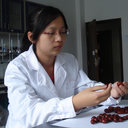The dosage-toxicity-efficacy relationship of kansui and licorice in malignant pleural effusion rats based on factor analysis.
キーワード
概要
BACKGROUND
The root of Euphorbia kansui T.P. Wang (Euphorbiaceae), a well-known traditional Chinese medicine (TCM) with certain toxicity, is known as Gan sui (Chinese: ) or kansui. It has been used to treat edema, ascites, asthma, and etc. Licorice is the root of Glycyrrhiza uralensis Fisch. or Glycyrrhiza inflate Bat. or Glycyrrhiza glabra L., Leguminosae. It is a widely used herbal medicine native to southern Europe and parts of Asia as an herbal medicine and natural sweetener. Kansui cannot be co-used with licorice, which is recorded in "eighteen incompatible" medicaments in many monographs of TCM.
OBJECTIVE
The present study was conducted to investigate the dosage-toxicity-efficacy relationship of the co-use of kansui and licorice and to explore its regularity of the toxicity and efficacy change.
METHODS
Malignant pleural effusion rats were used and randomly divided into the normal control group, model group, positive control group (furosemide), kansui group, licorice group, and kansui-licorice groups with different ratios (kansui: licorice: 4:1, 2:1, 1:1, 0.5:1, 0.25:1, 0.1:1). Each group was adopted simultaneously to investigate the characteristic of toxicity and effect by measuring the pleural fluid and urine volumes, serum biochemical indexes, and serum TNF-α, IL-2 and IFN-γ levels. The factor analytic approach was used to analyze the dosage-toxicity-efficacy relationship between kansui and licorice.
RESULTS
Two common factors were extracted from 8 indexes concerning toxicity and 5 indexes concerning efficacy. And the total factors related to toxicity (Ft) and efficacy (Fe) were calculated. The curved line of Ft indicated that the toxicity was increased along with the dose increase in licorice. The curved line of Fe indicated that the efficacy was decreased along with the dose increase in licorice. The intersection of these two lines was between the ratios of 2:1 and 1:1, and was deemed the flex point of the dosage-toxicity-efficacy.
CONCLUSIONS
Kansui demonstrated a certain efficacy in treating malignant pleural effusion, and the efficacy could be weakened by the co-use of licorice, even causing serious toxicity at the given ratio. The ratio between 2:1 and 1:1 (kansui: licorice) was deemed the flex point of the dosage-toxicity-efficacy of kansui and licorice. The results will be helpful for their better utilization and development.




